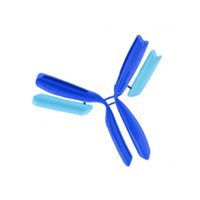GR09L Sigma-AldrichAnti-Transferrin Receptor (Ab-2) Mouse mAb (42/6)
Recommended Products
Overview
| Replacement Information |
|---|
Key Spec Table
| Species Reactivity | Host | Antibody Type |
|---|---|---|
| H, Rb, R | M | Monoclonal Antibody |
| Product Information | |
|---|---|
| Form | Lyophilized |
| Formulation | Lyophilized from a volatile buffer, 100 µg BSA. |
| Positive control | Most cell lines or placental tissue |
| Preservative | None |
| Quality Level | MQ100 |
| Biological Information | |
|---|---|
| Immunogen | purified, human transferrin receptor |
| Immunogen | Human |
| Clone | 42/6 |
| Host | Mouse |
| Isotype | IgA |
| Species Reactivity |
|
| Antibody Type | Monoclonal Antibody |
| Physicochemical Information |
|---|
| Dimensions |
|---|
| Materials Information |
|---|
| Toxicological Information |
|---|
| Safety Information according to GHS |
|---|
| Safety Information |
|---|
| Product Usage Statements |
|---|
| Packaging Information |
|---|
| Transport Information |
|---|
| Supplemental Information |
|---|
| Specifications |
|---|
| Global Trade Item Number | |
|---|---|
| Catalogue Number | GTIN |
| GR09L | 0 |
Documentation
Anti-Transferrin Receptor (Ab-2) Mouse mAb (42/6) SDS
| Title |
|---|
Anti-Transferrin Receptor (Ab-2) Mouse mAb (42/6) Certificates of Analysis
| Title | Lot Number |
|---|---|
| GR09L |
References
| Reference overview |
|---|
| Schneider, C., et al. 1982. J. Biol. Chem. 257, 8516. Trowbridge, I.S. and Omary, M.B. 1981. Proc. Natl. Acad. Sci. USA 78, 3039. Aisen, P. and Listowsky, I. 1980. Ann. Rev. Biochem. 49, 357. Omary, M.B., et al. 1980. Nature 286, 888. Seligman, P.A., et al. 1979. J. Biol. Chem. 254, 9943. |











